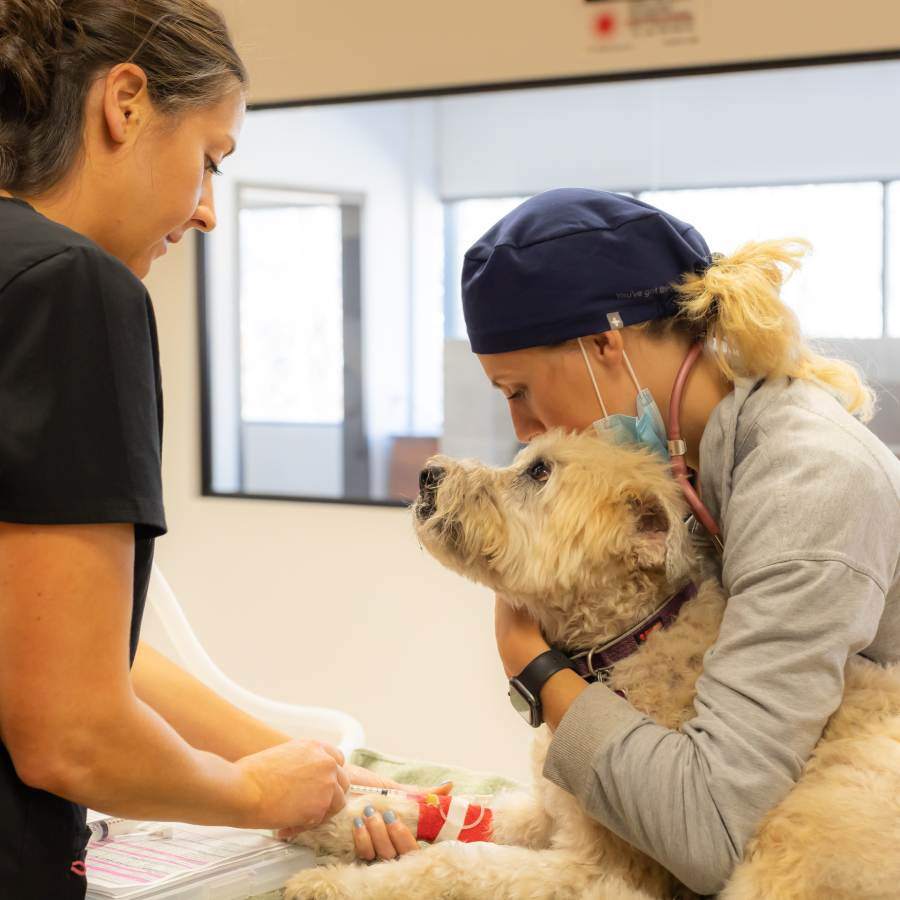
Pet Cranial Cruciate Repair in Kingston, NH
Learn more about how cranial cruciate repair can affect your pets below.
Call us today at 📞 (603) 642-9700
Pet Cranial Cruciate Repair (CCL)
The cranial cruciate ligament (CCL) is one of the major stabilizers of the knee, responsible for preventing internal rotation of the knee (stifle), forward displacement of the tibia (shin), and hyperextension of the joint itself. This ligament can tear during a sudden trauma but more commonly deteriorates over a period of months. Following a CCL tear, patients will usually present with a severe, pronounced limp.
Diagnosis of a CCL tear involves an extensive physical examination. X-rays are taken under general anesthesia, so the patient’s limb may be manipulated without pain to provide the area’s best radiographic views.
Following examination and review of the x-rays, a determination of the best course of action will be made, taking into account a number of factors, from the severity of the tear to the age and overall health of the patient. While some improvement can occur over time and with restricted activity (which can, unfortunately, lead to other health problems–obesity, etc.), a surgical CCL repair procedure is the best method to resolve lameness and minimize future osteoarthritis.
The most common surgical procedure to stabilize the knee is to create a new ligament (extracapsular cruciate ligament repair), other procedures such as a TPLO ( Tibial Plateau Leveling Osteotomy and TTA (Tibial Tuberosity Advancement Technique) can be performed if indicated.
A CCL repair is most often performed on dogs but is occasionally performed on cats.
All CCL patients will need to spend a minimum of 1-2 days in the hospital following the procedure. This is so the pain and discomfort can be controlled using injectable and transdermal medications and to restrict and monitor movement by the patient during this most critical period of recovery.
Once home, owners should do everything possible to limit their dog’s activity, as strict rest is required for proper healing. Initially, there should be no running, jumping, or playing, as these can all lead to re-injury.
Activity should be increased gradually, with short, slow, leashed walks beginning around the fourth week of recovery. Observation of the patient is absolutely crucial during this period in order to gauge the speed of recovery. Some dogs feel ready to run around and play within the first few weeks; they are not! A full return to normal activity is often allowed within 10-12 weeks, depending on the severity of the initial injury, age, breed, and overall health of the patient.
Get Care
© Plaistow-Kingston Animal Medical Center | Privacy Policy



